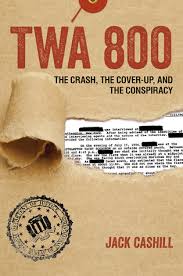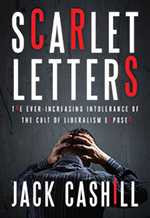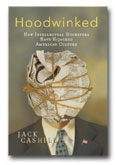Hillary’s New and Improved “Communication Stream of Conspiracy Commerce”
_____
Order Jack Cashill's latest book, TWA 800: The Crash, the Cover-Up, and the Conspiracy
______
Order Jack Cashill's book,
Scarlet Letters
___
Get your copy of Jack Cashill's book, "You Lie!"
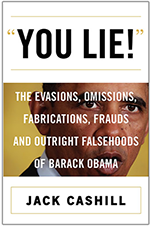
___
Get your copy of Deconstructing Obama
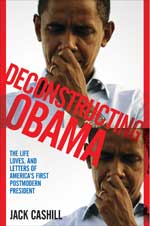
___
Jack Cashill's book:
Hoodwinked: How Intellectual Hucksters have Hijacked American Culture
© Jack Cashill
AmericanThinker.com - August 22, 2016
Last Wednesday, on MSNBC’s Rachel Maddow Show, Hillary Clinton campaign manager Robby Mook revived a weary 90’s-era theme, namely that any attack on someone named Clinton is, by its very nature, a “conspiracy theory.”
In the first four minutes of the interview, which played out under the banner “Trump pushes Clinton health conspiracy theories,” Mook or Maddow used some derivative of the phrase “conspiracy theory” no fewer than thirteen times, often preceded by the verb “peddle” and/or the adjective “rehashed.”
This whine may have seemed fresh to the snowflakes in Maddow’s audience, but it was vintage Clinton. Most memorably, Hillary evoked the specter of conspiracy on the Today Show in 1998 during an interview with the selectively gullible Matt Lauer. “ There isn’t any fire,” she told Lauer about the “smoke” surrounding her husband’s involvement with intern Monica Lewinsky.
''The great story here,” she said ominously, “is this vast right-wing conspiracy that has been conspiring against my husband since the day he announced for president.” As history records, Hillary was the one blowing smoke. There was fire enough to get her husband impeached.
In 1995, the Clinton White House counsel’s office tried to document the smoke in a 332-page report that bore the Austin Powers-like title, Communication Stream of Conspiracy Commerce. In its unapologetic paranoia, the effort recalled nothing so much as the final days of the Nixon administration.
“What is striking about the document,” observed the then semi-credible Washington Post, “is that it lays down this suspicion-laden theory about how the media works in cold print, under the imprimatur of the White House.”
According to the report, well-funded right-wing think tanks and individuals underwrote conservative newsletters and newspapers. Then, the stories were republished on the still-embryonic Internet, picked up by right-wing British media, processed through the respectable right-wing American press, fed to Congress, and ultimately covered by the mainstream media as a “real” story.
When the news about this report first broke in January 1997, White House press secretary Michael McCurry responded much the way Mook would twenty years later. “We wanted to refute some of the very aggressive charges being made fallaciously against the president, most often on the Internet coming from a variety of kind of crazy, right-wing sources," said McCurry. The goal of the report, he insisted, was to “help journalists understand that they shouldn't be used by those who are really concocting their own conspiracies.”
By 2016, Mook had little need to “help” anyone. He could bank on what Pulitzer Prize-winning journalist Michael Goodwin has called the most “shameful display of naked partisanship” in the history of modern American journalism. Nor did Mook have anything to fear from Congress or the respectable conservative journals cited in the 1995 report. As I have seen up close, the fear of being labeled a “conspiracy theorist” paralyzes right-of-center Washington.
“As a sixteen-or-so year subscriber to the Weekly Standard, I would like 15 minutes of your time to talk about my new book,” I wrote to the magazine’s Philip Terzian last month in regard to TWA Flight 800: The Crash, The Cover-Up, The Conspiracy“. This is the great untold story of our time, one with immediate political implications.” Wrote Terzian back in his nine-word response, “I'm afraid there's no interest here in the subject.”
The response did not surprise me. In September 2008, I sent the Weekly Standard, a publication for which I used to write, a 3500-word article on Bill Ayers’s role in the creation of Barack Obama’s Dreams from My Father. “I am convinced that I am right and, if I am, it is major,” I wrote.
Responded Terzian, “An interesting piece, but I’m rather oversubscribed at the moment, the length is considerable, and cutting would not do it justice.” A fair review of the evidence in the Weekly Standard could have affected the outcome of the election, but, alas, in 2008 there was not enough space. (Kudos to the American Thinker for publishing the piece).
Two public figures did come to the defense of my thesis that Ayers helped Obama write Dreams. One was the late Andrew Breitbart. The other was Donald Trump. "They say Dreams of My Father was genius, and they give [Obama] full credit, and now it's coming out that Bill Ayers wrote it," Trump told Laura Ingraham in March 2011, getting everything right but the preposition in the book's title. "That's what started him on this road where he became president."
What really got the media’s attention in 2011 was Trump’s willingness to question Obama’s eligibility to be president. “It’s a very sad thing, because the people, the birthers, they got labeled and they got labeled so negatively and even the word ‘birther’ is a negative word,” he told CNN in March of that year. “If you come out and even question, the press goes wild. They get angry at the question.”
Here, Trump nailed the issue—“They get angry at the question.” The “they” includes not just the major media and the Rachel Maddows, but the Philip Terzians as well. By raising unwelcome questions, Trump threatens their very identify as custodians of the truth. Not knowing the answers to the questions he raises, not even wanting to know, they attack the questioner.
True to form, the hosts of two separate TV programs denounced Beitbart as a racist for questioning Obama’s authorship. Trump meanwhile has caught heat of a thousand suns from every imaginable nook in the universe and with every imaginable blast.
PBS icon Ken Burns summed up the establishment’s contempt for someone who so happily questions their orthodoxies. Trump “threatens a free press, mocks the handicapped, denigrates women, immigrants and all Muslims,” said the otherwise “consciously neutral” Burns. “[He is] an infantile, bullying man who, depending on his mood, is willing to discard old and established alliances, treaties, and long-standing relationships.”
No, Trump does not threaten a free press. He threatens the existing order’s monopoly on that press. He is a one-man communication stream of conspiracy commerce. Right now, Trump is raising questions about obvious issues, ones immediately relevant to the campaign—Hillary’s health, Huma Abedin’s loyalties, the Democratic exploitation of black America.
If elected, he might very well go deeper. There are a lot of influential people who don’t want to see that happen.

Jack Cashill’s newest book, TWA 800: The Crash, the Cover up, the Conspiracy can now be ordered at Amazon.

